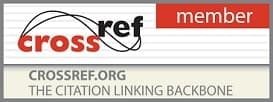2019, Vol. 3 Issue 3, Part A
Ultrasound-Guided platelet-Rich plasma (PRP) injection in partial-thickness rotator cuff tear
Author(s): Dr. Umang Agrawal and Dr. Rahul Parmar
Abstract: Introduction: The pain and discomfort associated with Rotator Cuff Tear (RCTs) and restriction of shoulder movements can significantly decrease the value of a patient’s lifestyle, hindering one from performing daily activities and accomplishing goals as adequately and frequently as one would like. The aim of the study is to evaluate the clinical and ultrasonography changes in the morphology of rotator cuff tendons after ultrasound guided injection of platelet- rich plasma (PRP) for rotator cuff tears.
Material and methods: This study is a prospective randomized controlled study which was conducted in the Department of Orthopaedics. PRP injection was done using ultrasonography guide via anterior sub acromial approach. Demographic data were obtained in all patients before the study, and shoulder function was evaluated using the Visual Analogue Scale (VAS) for pain, Quick Disabilities of the Arm, Shoulder and Hand Scale (DASH) score, Oxford shoulder score.
Results: Total 87 cases of partial RCTs (diagnosed by USG and MRI) were enrolled in this study. Pre injection mean VAS score, DASH score, OSS score was 6.78, 53.97, 26.48 respectively and post injection at 6 month VAS score, DASH score, OSS score was 0.32,1.54, 46.8 respectively. Significant improvement was observed after injection. All cases were healed. None case had rehear.
Discussion: Rotator cuff tears are a cause of significant shoulder disability. Surgical repair of rotator cuff tears is complicated by significant re-tear rates and recurrence of symptoms. The use of platelet rich plasma in partial rotator cuff tears may offer a nonsurgical treatment for patients who do not respond to conservative rehabilitation methods.Steroids are available therapeutic agents having short term symptomatic effects but have local and systemic side effects, are costlier compared to PRP and there is the ambiguity of their safety.The critical findings of present study will open up new avenues of research into a better understanding of the role of PRP in RCT.
Conclusion: The use of PRP as a minimally invasive treatment option with the prospect of speedier recovery time and less morbidity post-treatment, as opposed to surgical interventions, is thus a highly attractive option and one that ought to be further investigated.
Pages: 33-35 | 1679 Views 134 Downloads

How to cite this article:
Dr. Umang Agrawal, Dr. Rahul Parmar. Ultrasound-Guided platelet-Rich plasma (PRP) injection in partial-thickness rotator cuff tear. Nat J Clin Orthop 2019;3(3):33-35 DOI: https://doi.org/10.33545/orthor.2019.v3.i3a.158






